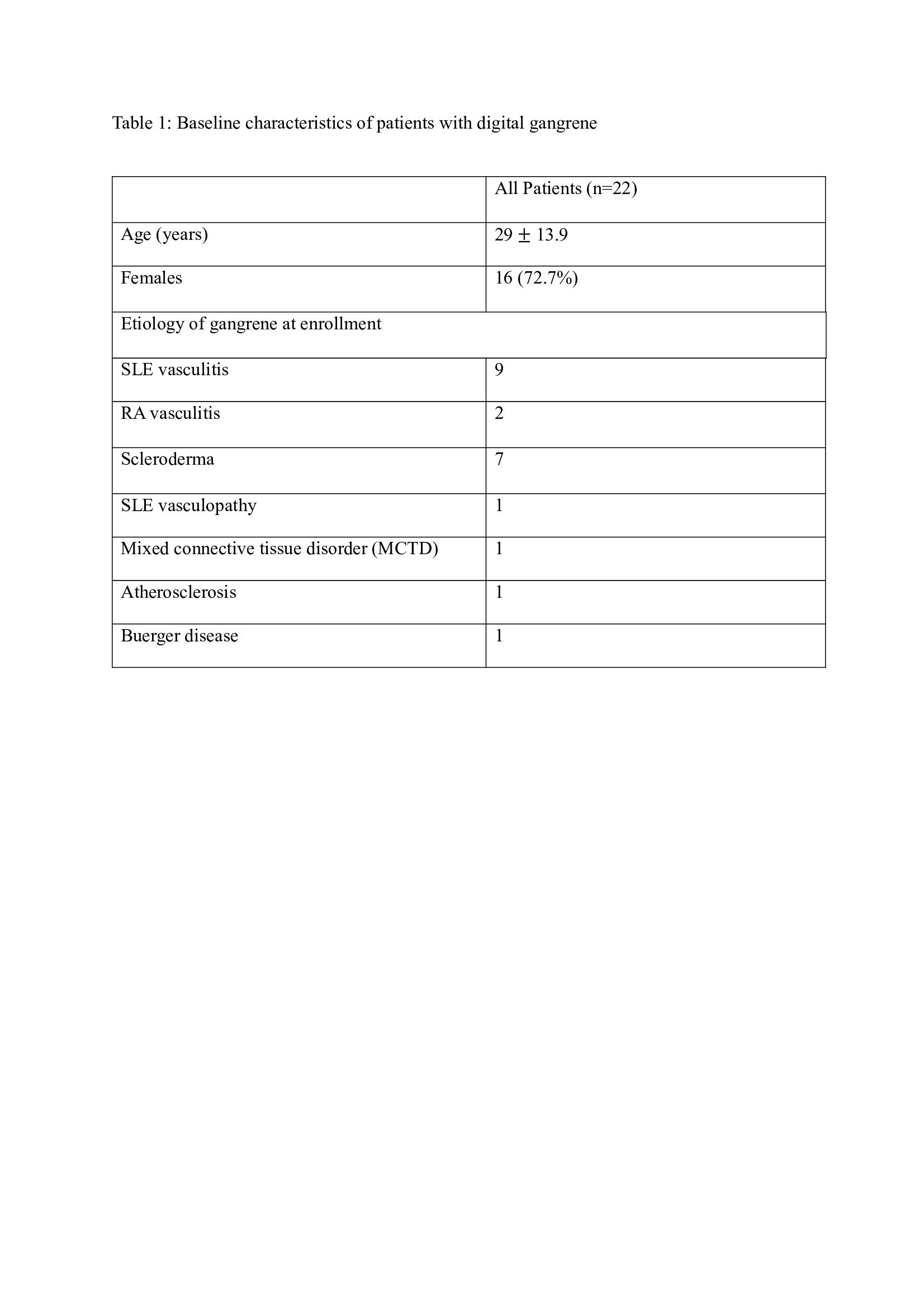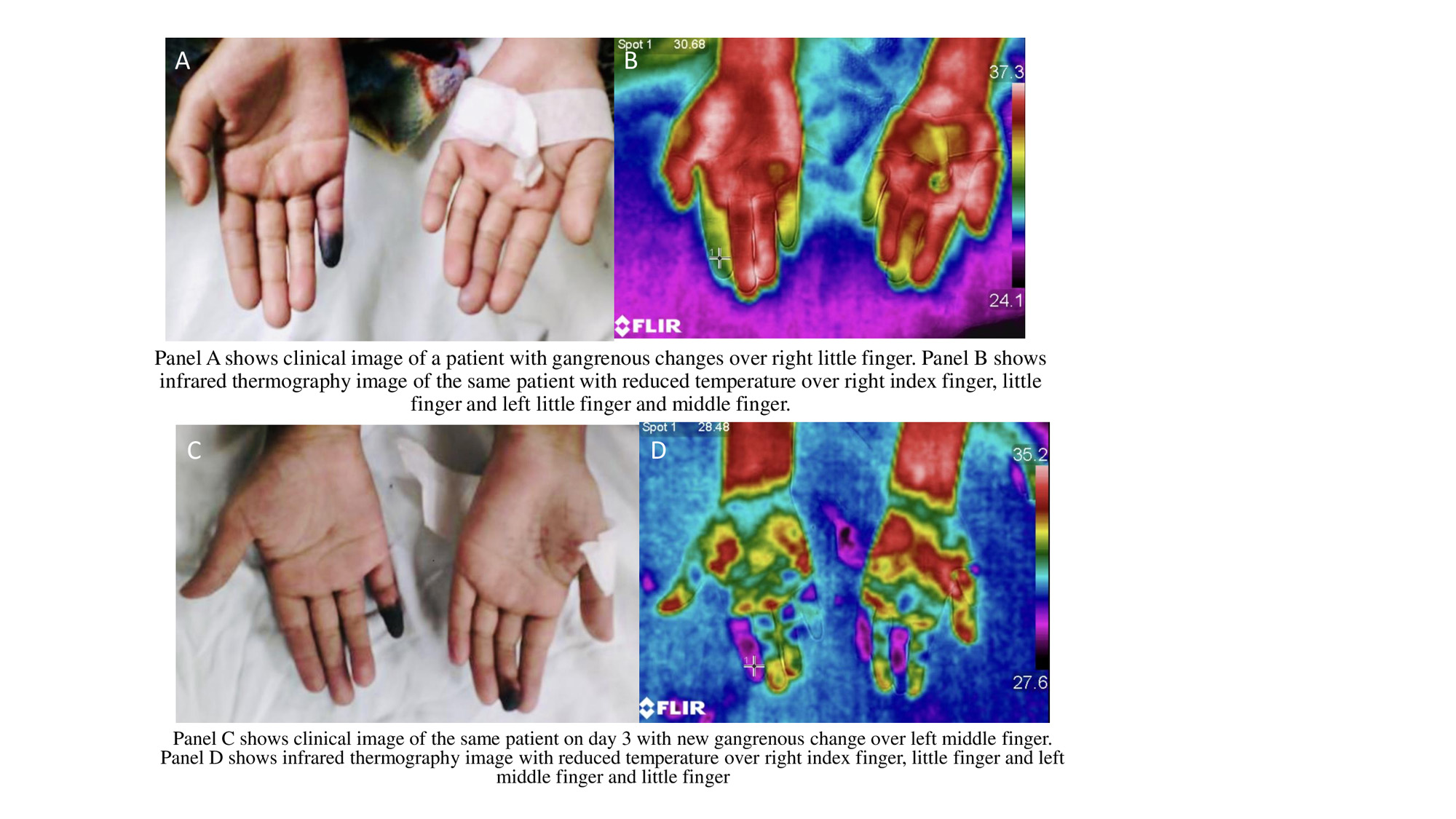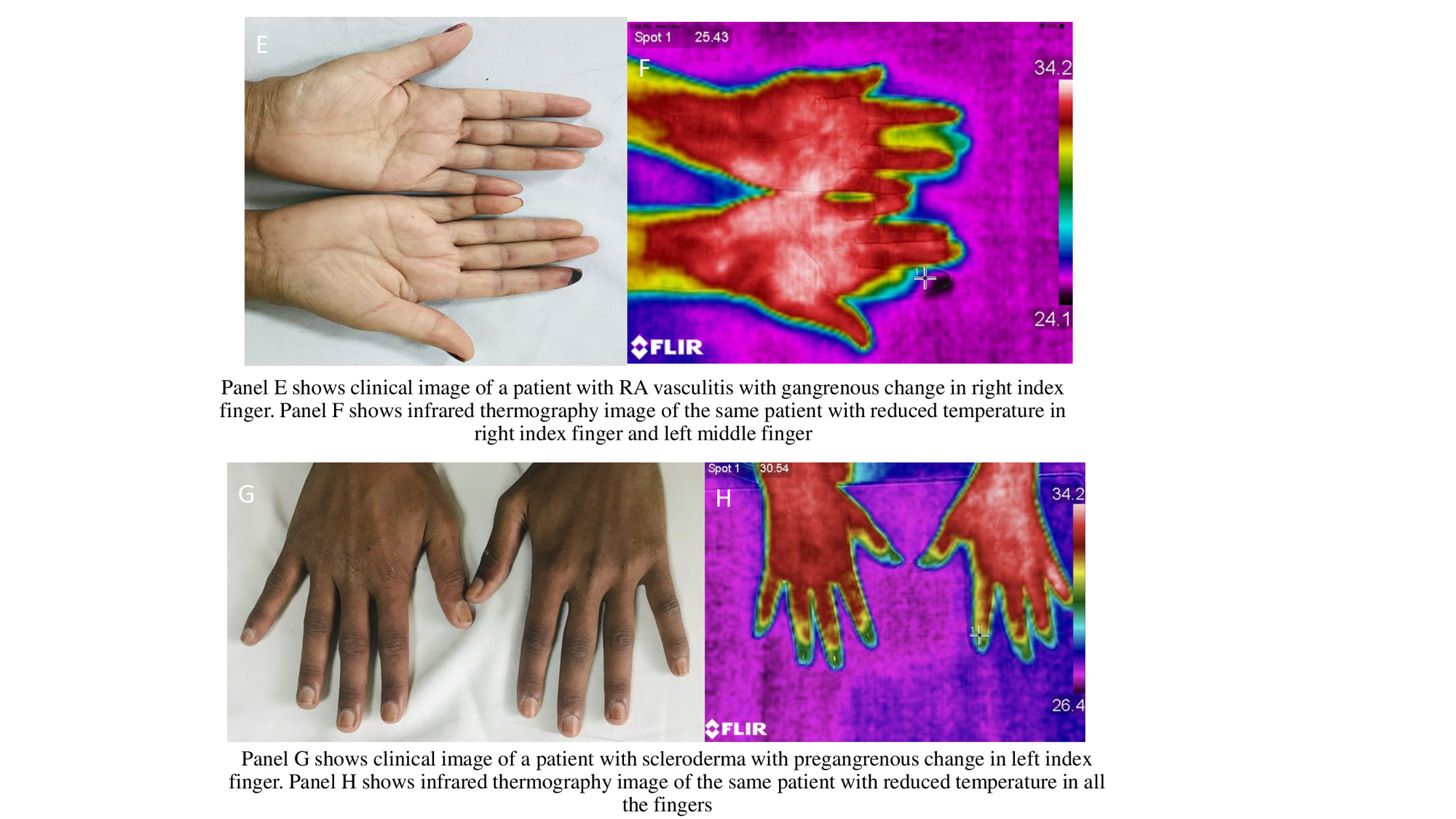Session Information
Session Type: Poster Session C
Session Time: 9:00AM-11:00AM
Background/Purpose: Digital gangrene has been described as a complication of several Autoimmune Inflammatory Rheumatic Diseases(AIIRD). Due to multiple underlying mechanisms causing digital gangrene in AIIRD patients, it is difficult clinically to determine the aetiology. Moreover, it is difficult to clinically assess and determine the progression of pregangrenous changes daily. In this study, we would like to assess the utility of infrared thermography in identifying the aetiology of digital gangrene as well as assessing the daily progression of pregangrenous areas using infrared thermography principle.
Methods: 22 patients with digital gangrene were included. Infrared thermography was done using compact thermal camera FLIR C5 which has a resolution of 19,200 pixels and an infrared sensor of 160*120 with thermal sensitivity of < 70 mK. Baseline thermography images will be taken on day 1 and will be repeated on daily basis till discharge to assess for daily progression of gangrene. Thermography images were correlated with clinical aetiology of gangrene to see for any specific pattern. Daily thermographic images were compared with clinical progression of gangrene to see if thermography could predict gangrene evolution.
Results: We found that infrared thermography was a useful tool for assessing pregangrenous lesion in patients presenting with digital gangrene. Out of 22 patients enrolled with digital gangrene, 3 had progressive gangrene in which infrared thermography image on day 1 showed reduced temperature of pregangrenous fingers which later became gangrenous. It was found that the mean temperature detected by using infrared thermography in gangrene due to vasculitis was 31.3±1.40C whereas the mean temperature due to vasculopathic lesion was 27.8±1.60C indicating that vasculopathic gangrene tend to be colder than vasculitic gangrene. Out of 9 patients who had vasculopathic gangrene, 7 had symmetrical reduction in temperature in both limbs which was clinically inapparent, indicating that infrared thermography could be used as a potential tool to detect vasculopathy. On monthly follow up of these patients, it was found that patients with vasculitic gangrene tend to have a better temperature response after treatment with immunosuppression when compared to vasculopathic gangrene indicating that infrared thermography could be utilised as a potential tool to assess treatment response in patients with vasculitis and vasculopathic gangrene.
Conclusion: Infrared thermography could be a utilized as a potential tool in assessing patients with digital gangrene especially in identifying pregangrenous lesions early, differentiating vasculitis and vasculopathic lesions and for assessing treatment response. Further studies are required to validate the use of infrared thermography in patients with digital gangrene.
To cite this abstract in AMA style:
Chandra M N, Kumar P, Dhakad U, Bhardwaj S, Pruthviraj Buddha S, Vijayvergia P, Singh L. Utility of Infrared Thermography in Patients with Digital Gangrene [abstract]. Arthritis Rheumatol. 2023; 75 (suppl 9). https://acrabstracts.org/abstract/utility-of-infrared-thermography-in-patients-with-digital-gangrene/. Accessed .« Back to ACR Convergence 2023
ACR Meeting Abstracts - https://acrabstracts.org/abstract/utility-of-infrared-thermography-in-patients-with-digital-gangrene/



